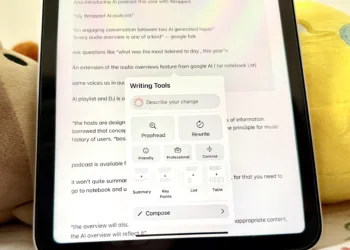One of Apple’s standout innovations in recent years has been the introduction of satellite connectivity for iPhones, designed to assist with emergency situations and communication. This feature proved invaluable during Hurricane Helene a few weeks back, and now, there are indications that Apple plans to extend this capability to its smartwatch line.
According to a report from Bloomberg, the upcoming Apple Watch Ultra model set to launch next year will have the ability to connect to satellite networks. It will enable users to send text messages from remote locations using Globalstar Inc.’s satellite fleet when cellular or Wi-Fi connections are unavailable.
Initially, when this system was rolled out two years ago, its functionality was confined to reaching emergency services. Later, Apple broadened its usage to include roadside assistance as well. With the arrival of iOS 18, users can now send and receive text messages via satellite connectivity.
What’s particularly exciting about this new smartwatch is its capability to function independently of an iPhone. This means users can leave their phones behind during hiking trips or other adventures, yet still have access to satellite messaging. Consequently, the next-generation Apple Watch Ultra is poised to become the first mainstream smartwatch with this satellite link-up feature.

In addition to satellite features, Apple is reportedly planning to shift from Intel modems to a MediaTek model for cellular connectivity on its smartwatches in the next few years. The company is also moving away from Qualcomm by integrating its own in-house modems into new devices, including the anticipated refresh of the iPhone SE next year.
Moreover, an exciting upgrade will include support for a version of 5G, though it will be a scaled-down variant from the standard. Thus far, Apple Watches have relied solely on 4G LTE for cellular functionality. The new 5G capabilities will target download speeds of 150 Mbps and upload speeds of 50 Mbps, notably lower than typical 5G. This technology, known as 5G RedCap (Reduced Capability), is aimed at improving performance for IoT devices, including wearables, by offering better data rates, reduced latency, and enhanced energy efficiency.
As described by Ericsson, the application of 5G RedCap extends to various use cases, encompassing smartwatches, wearable medical devices, basic AR/VR glasses, video surveillance, industrial sensors, and smart grid technologies.
Apple is also reportedly focused on developing advanced health monitoring features, with blood pressure monitoring technology still in the works. However, there’s currently no timeline for its release. Additionally, the company is exploring noninvasive blood glucose monitoring, although this feature will take more time to materialize. While the pace of innovation in the health sector for wearables has slowed, Apple has made strides by introducing features like hearing aid support for AirPods earlier this year.











